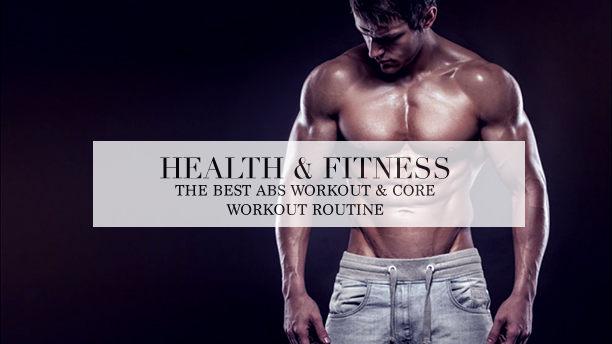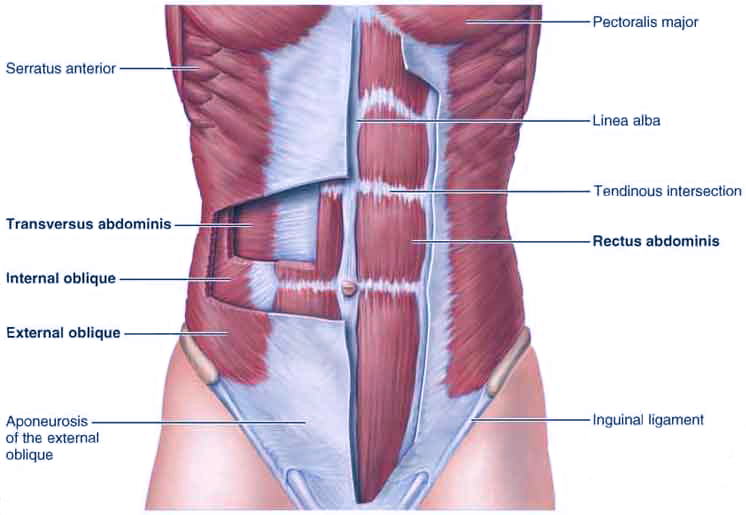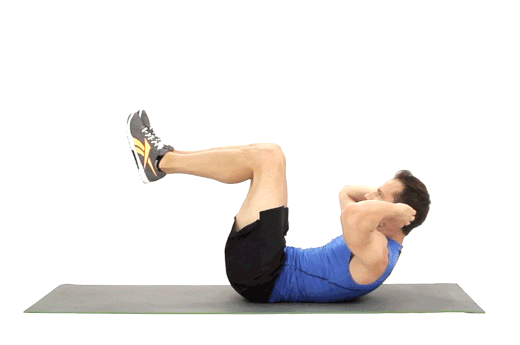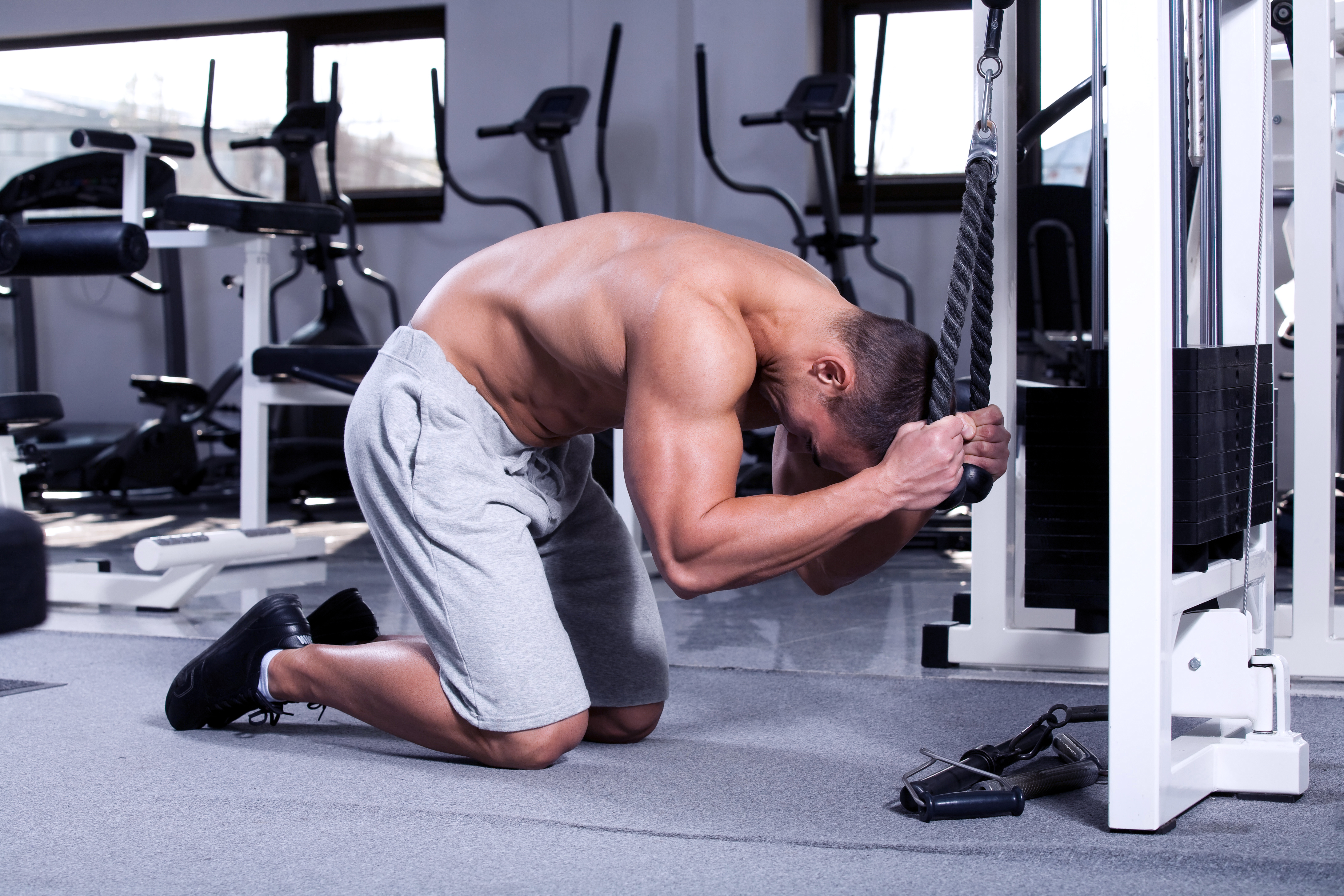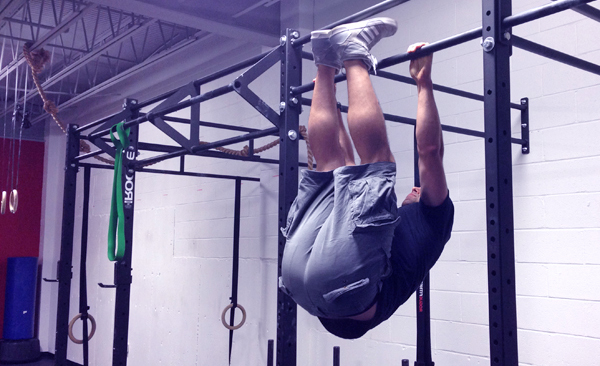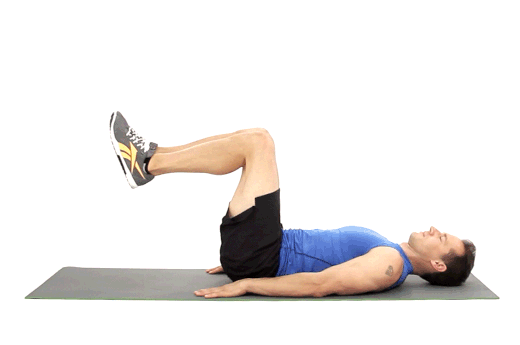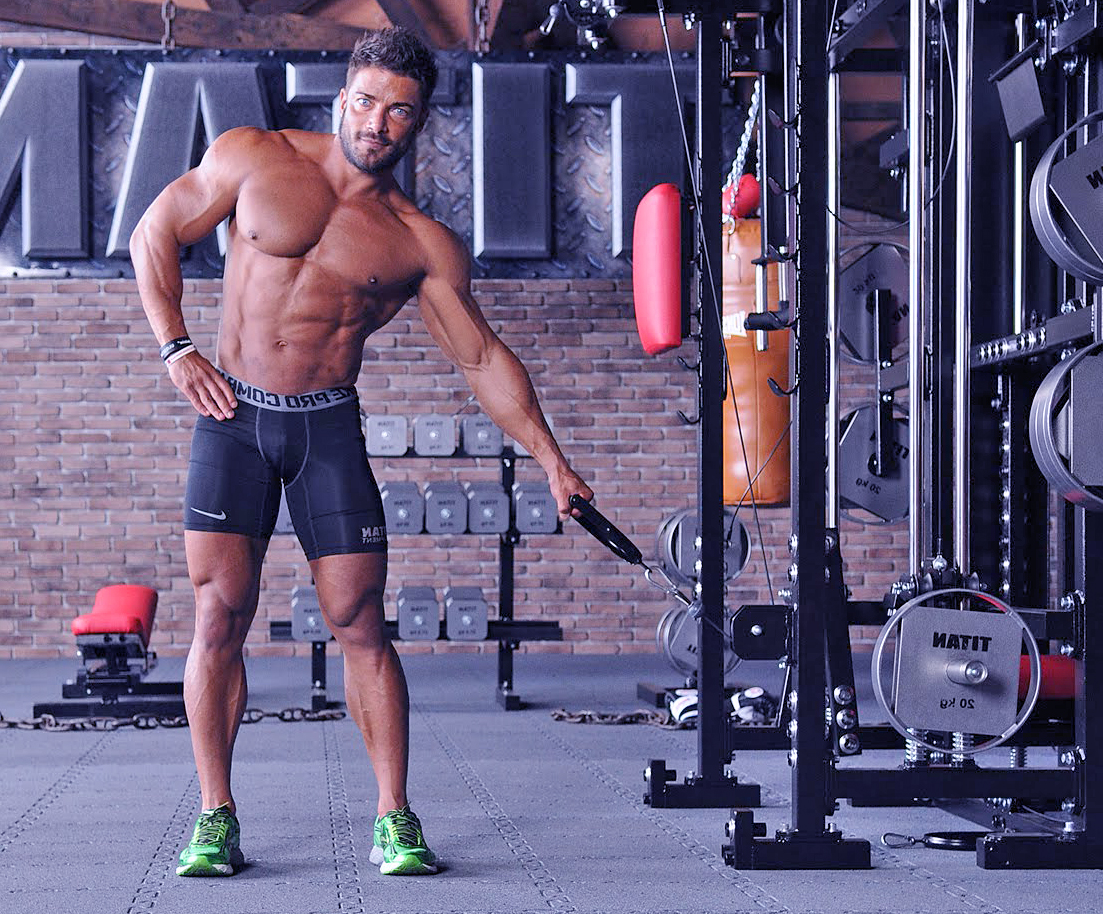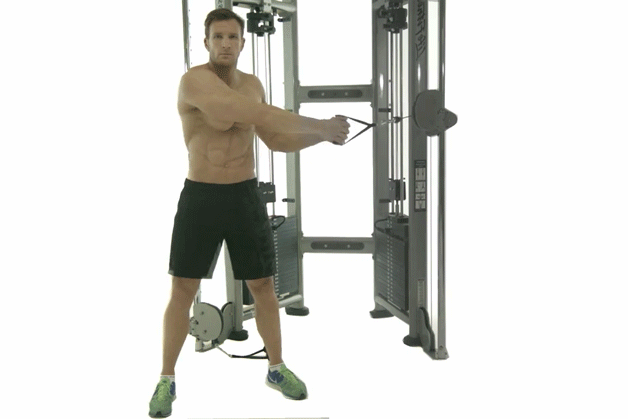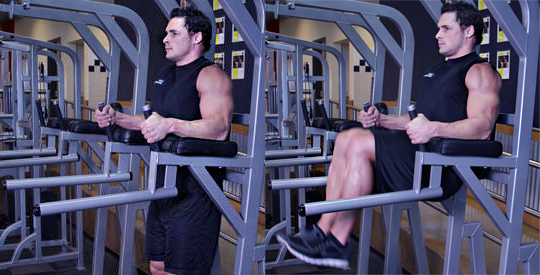You should treat your abs just like every other muscle group in your body. This means that if you are seeking to increase the mass of the abdominals then you must train them for the outcome intended – in this instance, you would approach training with a long-term goal of increasing the weight load – a progressive overload approach.
It’s crucial to identify the different muscles the make up the abdominal region. Identification and understanding the role that each of these muscle groups has in the movement of the core region will help to better target with exercises that stimulate each section with greater intensity.
Many of these muscles will move in tandem with one another as they each play a component in core stability. However, for the purpose of abdominal training, you should in any case target each muscle or muscle group using precise methods.
For the purpose of this workout, we have broken the exercises down to target these core regions:
- Upper Abs
- Lower Abs
- Obliques
- Hip Flexors
Due to the mechanics of the body, it would be difficult to remove the contractions of individual muscles within the core region completely, as the muscles around them, will support the action of the movement in some way. You will find in most instances that even when targeting the upper abs that you will get a contraction of the lower and obliques still.
It is therefore important when performing any exercise that targets one of these regions specifically, to maintain concentration and to focus the contraction on the muscle you are targeting. Poor form is the biggest culprit along with using too much weight in certain exercises.
There are five-movement of the vertebral column: flexion, extension, lateral flexion, rotation, and circumduction.
- Flexion is a forward movement.
- Extension is a backward movement.
- Lateral extension is bending of the body to one or other side
- Rotation is twisting of the vertebral column i.e. twisting your body so that you look left or right.
- Circumduction is a combination of all of the above movements.
Circumduction movements should be excluded in core workouts, especially when added resistance is applied. When no or minimal resistance is applied the movement could be used as a stretching exercise, however. Circumduction movements can greater increase the risk of injury as the tension happens to be displaced across a multitude of muscles in an abnormal fashion. As your body moves through the entire range of the circumduction movement, a muscle group that corresponds to the position of your torso will be placed under greater tension. As you move your body through the range of motion these muscle fibres will not only contract but also begin to twist, then as you move the tension will displace onto the following muscles. This action could place specific muscles under too much tension too quickly causing muscle strain and injury.
Flexion, extension, lateral flexion and rotation movements are all included within this workout.
As a general rule, the flexion and extension will target your upper and lower abs, depending on the angle that you initiate a movement. The lateral flexion will target your obliques and the rotation will target most of your core with an emphasis on the obliques including the transverse abdominal that lay underneath your abs.
The transverse abdominal is the innermost of the flat muscles that lay beneath the internal obliques. Its function is to help compress the ribs and viscera, to provide thoracic and pelvic stability. It also helps to flatten the abdomen by pulling back the rectus abdominals. Where the transverse abdominal has not been developed appropriately, you often find individuals with protruding abdominals – where they slump forward, often losing shape even when the individual has well-worked abs.
The transverse abdominals are core stability muscles that help with spinal stabilisation and keeps the core region steady under most lifting routines – strengthening these will help you to control many lifting routines with better effect. It is, therefore, crucial for stability and aesthetics that you develop the transverse abdominals along with the rest of the core muscles identified in this workout.
The Workout:
| Exercise | Sets | Reps |
| Hanging Straight Leg Raises | 2 | To Failure |
| Cable Crunch | 3 | 12-15 |
| Weighted Side Bends | 3 | 10 |
| Standing Cable Wood Chop | 3 | 10 |
| Hanging Bent Knee Leg Raises | 3 | 10 |
| Standard Crunch | 1 | To Failure |
| Reverse Crunch | 2 | To Failure |
How To Perform The Abs & Core Exercises:
Upper Abs
Standard Crunch (Upper flexion movement)
1 Sets to failure
- Lie face up on the floor with your legs up in the air and knees bent about 90-degrees. Bringing your
- knees up will slightly contract the lower abs in your starting position this will intensify the contraction when you execute the movement.
- Fold your hand across your chest or cup your head slightly, whichever gives a better contraction for you.
- This is a short range of motion exercise: Just contract your abs and pull your upper body toward your knees. Only lift your upper torso up so that the upper abs contact, do not go further so that your lower back comes off the floor. With your feet off of the floor, it should prevent your lower back from coming up anyway.
- Contract the upper abs hard at the peak of the movement, then lower back down.
- Repeat to failure.
- As you progress, you could include a weight to increase the resistance that is held behind your head.
Cable Crunch (Upper flexion movement)
3 Sets 12-15 Reps
- Place a cable at mid-length with a rope attached.
- The secret to this is not to go too heavy, as heavy weights will activate more of hip flexors rather than the abs.
- Sit kneeling about two feet away from the cable machine.
- Bring the rope down and lock your arms and elbows just above your head – this is the starting position.
- Draw the robe down initiating the movement with the abs, not with the arms.
- As you come down bring your elbows in toward your chest – this is the key point.
- Do not bring your elbows straight to the floor, you must tuck them in towards you as you come down.
- This will remove the hip flexors and concentrate the movement onto the abs.
- Once you have fully contracted the abs, slowly come back up – maintaining tension on your abs as they stretch back out.
- Repeat for the number of reps.
Note: To best utilise the increased resistance that this exercise brings, perform this exercies near to the beggining of an abs and core workout when you have substatial strength and not succumb to fatique.
Lowers Abs
Hanging Straight Leg Raises (Lower flexion movement)
2 Sets to failure
- With leg raises initiate with the abdomen, not the hips. The hip flexors will engage to quite a degree but, by initiating the movement with the abs will help combat this. This whole movement involves a lot of control throughout the entire range of motion, especially on the decline.
- Take a position on a pull-up bar, straighten your legs and contract and tighten up your core. This will be the starting position.
- Lift your legs up in front of you by initiating with your abs first – while maintaining straight legs.
- Bring your legs up in one smooth, controlled action so that your legs are at a 90-degree angle parallel to the floor. Your hip flexors will engage and take up a lot of the tension to get it up to this angle.
- While maintaining the motion, further rotate and bring your pelvis up by contracting the abdomen further. Bring your legs up so that there is about 30-degree between your chest and legs – so that your toes are nearly to the bar. This part can be rather challenging even for the well-trained.
- Finally, and perhaps the most important step in this routine is the lowering phase.
- Lower, your legs slowly so that you can feel the tension on your abs as they stretch back out.
- Once you hit the bottom of the movement do not allow your core to loosen and hips sink. Maintain a strong steady core and repeat the action to failure.
- As you progress you can add ankle weights.
Note: This is a very demanding exercise that is best performed near to the begining of your abs and core workout. Attempt as many reps as you can in each set without losing form – you should slowly see improvement in your contol and reps over a number of weeks.
Reverse Crunch (Lower flexion movement)
2 Set to failure
As the name implies, this is a variation of regular crunches. It’s important to minimise the hip flexors in this exercises. Focus only on moving the lower abs.
- Lie faceup on the floor or a flat bench and draw your knees in close to your chest—this is the starting position.
- Initiate the movement by contracting your abs to lift your pelvis off the floor and roll your knees toward your forehead.
- Squeeze at the top, then slowly lower back to the starting position.
- Repeat
Obliques
Weighted Side Bends (Lateral flexion movement)
3 Sets 10 Reps
- A cable machine can be a great option as it can allow you to change the angle of resistance.
- Place the cable machine to its lowest point with a hand grip attached. Make sure that it gives you a significant range of motion, if not stand on a sturdy platform placed directly beside the cable.
- Select a weight that you can manage, if you go too heavy it could cause injury.
- Hold the cable and stand up straight.
- Tighten up your core and abs – this is the starting position.
- Slowly bend to your side, controlling the weight down.
- Bend at your waist and keep your legs and hips firm and still.
- Go down as far as you find comfortable, do not overstretch, and stay aligned – do not bend your waist forward or backwards.
- Once at the bottom, slowly rise back up to the starting position.
- Repeat for the number of reps.
- Follow these same directions for your opposite side.
Note: To vary the point of tension on the obliques, step one or two paces away from the cable machine.
Standing Cable Wood Chop (Rotation movement)
3 Sets 10Reps
- Using a cable machine with a handle attached.
- Adjust the cable into a high position.
- Take hold of the cable with both hands and walk about a pace or two away from the machine.
- Stand at a right angle to the machine.
- Slightly bend your legs and tighten them up.
- Stand up straight and tighten your core.
- Straighten your arms out – this is the starting position.
- Slowly twist and draw the cable across your body while maintaining straight arms – your torso should rotate in one smooth action as you draw the cable form one side to the other.
- Once you have reached the extreme range, slowly control the weight back to the starting position.
- Repeat for the repetitions stated.
- Then follow these same directions for your opposite side.
Hip-Flexors
Hanging Bent Knee Leg Raises (Lower flexion movement)
3 Sets 10 Reps
- It’s easier to perform on parallel bars rather than a pull-up bar.
- Get into position on a parallel bar and straighten your back.
- Keep your abs tight and steady throughout the movement.
- Lift your legs up, initiating the movement from the hips flexors – do not move your abs in this exercise.
- As you lift your legs up, bend your knees and bring them up to a 90-degree angle parallel to the floor.
- Slowly return to the starting position and repeat for the require repetition.
You may be thinking about the transverse abdominals as this point and how to best work them. All of the exercises above will work your transverse abdominals to quite a degree, and as mentioned they are stimulated under many lifting exercises. As long as you maintain good posture when performing different lifts this will build up your transverse abdominals rather well. The key is a strong, steady contraction of the core region when performing any lift.
Planks are fine for core stability and for learning to tighten your transverse abdominals but, because there is no active movement, the muscles will not undergo any sufficient stimulation to warrant this as an effective exercise for mass development of the abs.
If you are one of the many with an extended abdomen then you need to learn to tighten your transverse abdominals. As mentioned planks will allow you to learn how to contract the transverse abdominals but, if you want to completely eliminate your extended abdominal you will need to learn control and contract them so that they become more active in your posture, generally.
Simple ways to do this is when sitting at a desk; sit up straight and tighten your core, hold it for say a couple of minutes, and slowly increase this time interval as you progress, get stronger and more comfortable. This can also be done when walking around too. The great thing about this exercise is that it helps to correct your posture, forcing you to straighten your spine and back. Over time, this posture will become more natural to you, so stick with it.

